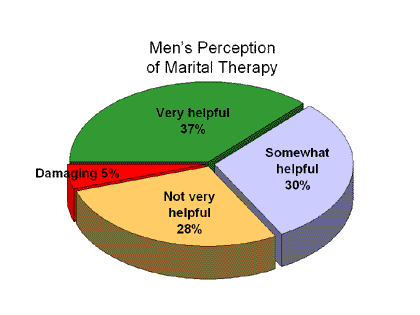





|
A Note on the Research In writing this book, I have relied on two major pieces of research: 1) in-depth interviews, which I personally conducted, with seventy American husbands, and 2) a national, scientific survey of 288 husbands, which was carried out on my behalf by the University of Kentucky The in-depth personal interviews generally lasted two to three hours each. The span in age of the interviewees was 22 to 92, their length of marriage ranging from three months to 72 years. The interviewees included husbands from all regions of the country (twenty-two states), and most major ethnic groups. They had fathered anywhere from zero to eight children, and had been married between one and six times. I identified men to interview through several sources: 1) religious organizations, 2) interest groups, including labor unions, ethnic-oriented associations, and professional organizations, and 3) personal contacts.
In 2003 and 2004, I traveled to several regions of the country to conduct most of the interviews in person. I offered anonymity to the interviewees, and tape-recorded most of the conversations.
In late 2003, I wrote a 100-item questionnaire to be used by UKSRC to conduct a national, random, telephone survey on my behalf. That survey was conducted in early 2004, overseen by Dr. Ronald E. Langley, director of UKSRC.
The sample for this telephone survey was selected using a modified list-assisted Waksberg Random Digit Dialing method. This means that every home telephone line in the continental United States had an equal probability of being selected. The margin of error for the 288-person sample size survey is + 5.8% at the 95-percent confidence level. The response rate for the survey, based on one of the standardized methods (known as RR4) developed by the American Association for Public Opinion Research, was 46.7 percent. That means that just less than half of the men contacted who were eligible to take the survey agreed to do so.
Respondents to this telephone survey ranged in age from 19 to 90. They had been married between two months and 70 years, and had between zero and eight children. Ninety percent of the respondents were white, 5 percent African American, 4 percent Latino, and the rest Asian, Native American, or other. In most respects, this survey captured a representative sample of the national population of married men. However, compared to U.S. Census data, the husbands who agreed to answer the survey had a higher income than average, and racial minorities were underrepresented. To mitigate these concerns, I specifically sought out low-income men and racial/ethnic minorities for my in-depth interviews. Their stories are related anecdotally throughout the book.
There are other limitations to my research. For example, married men who have only cell phones are underrepresented because current sampling programs do not include cell-only exchanges. Also, men who cannot communicate in English over the phone are not represented in the survey.
Overall, though, the combination of a quantitative survey and in-depth interviews offers a rare, multi-dimensional portrait of the American husband. I hope it will inspire other explorers of the male psyche to move forward with much-needed new research in this arena. N.J.C.
"This thoroughly researched, engaging, and timely
book explains how men experience intimacy, love, and marriage. I don't
know whether VoiceMale will be more valuable to men or women. Men will
see themselves here. Women will come to understand the men they
love." |


